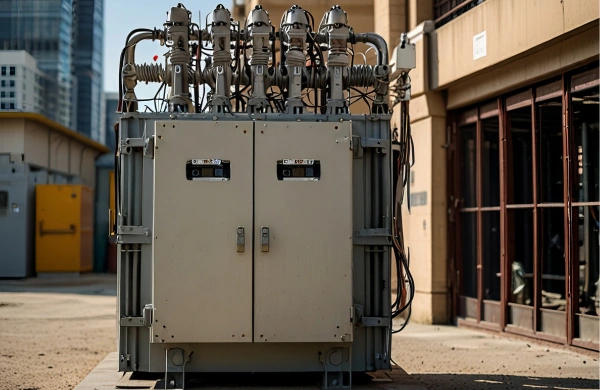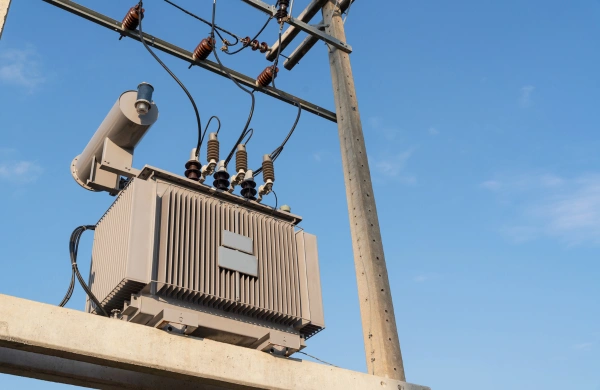As global energy demand grows and power infrastructure modernizes, substation transformers have become critical to ensuring stable, efficient, and secure electricity distribution. Whether in grid substations, renewable energy interconnections, or industrial facilities, these transformers form the heart of power flow management—linking generation, transmission, and consumption seamlessly.
Know About Innovation in Substation Transformers Powering Energy Security
Energy security today depends not just on generation capacity but on the reliability and intelligence of the grid. At the center of this transformation are innovative substation transformer technologies that combine durability, efficiency, and smart monitoring to power tomorrow’s resilient electrical networks.
The Evolving Role of Substation Transformers
A substation transformer is designed to step voltages up or down between generation, transmission, and distribution levels. In conventional grids, these units functioned purely as passive electrical components. However, the rise of renewables, decentralized generation, and advanced grid automation has reshaped their role.
Modern substations now demand:
- Higher efficiency and lower losses to minimize energy waste.
- Advanced monitoring systems to detect faults and predict failures.
- Compact designs to suit urban and renewable installations.
- Compatibility with smart grid communication standards.
In other words, substation transformers are no longer static hardware—they are intelligent, digitally connected assets vital to maintaining grid reliability and energy security.
Key Innovations Transforming Substation Transformer Design
1. Digital Monitoring and Smart Diagnostics
One of the most significant advancements in transformer technology is the integration of digital monitoring systems. Sensors and IoT-enabled diagnostic tools now track parameters like
- Winding temperature and hotspot detection
- Oil moisture content and gas formation
- Partial discharge activity
- Load and harmonic analysis
These systems allow utilities and EPCs to shift from reactive to predictive maintenance, extending equipment life and reducing costly downtime. Cloud-based platforms can analyze real-time data to predict failure modes long before they occur.
2. Advanced Core Materials for Energy Efficiency
Efficiency remains a defining factor in transformer innovation. Manufacturers are increasingly using amorphous metal cores and advanced silicon steel laminations to minimize core losses.
In large substation transformers, even a small improvement in loss performance translates into substantial energy savings over decades of operation. Such advancements improve grid efficiency and contribute directly to national energy security goals by reducing overall transmission losses.
3. Enhanced Cooling and Thermal Management
Modern transformer designs are incorporating optimized oil circulation systems, forced-air cooling (ONAF), and hybrid cooling configurations to manage thermal performance.
These designs extend service life, enhance overload capability, and allow transformers to operate efficiently even in high ambient temperatures—a critical requirement for industrial substations and remote renewable installations.
Some new models also use natural ester-based insulating fluids, which are biodegradable, fire-resistant, and thermally superior to traditional mineral oils, making them safer for environmentally sensitive sites.
4. Compact and Modular Construction
With growing urbanization and renewable grid interconnections, space constraints at substations are common. Transformer manufacturers are responding with compact, modular substation transformers that maintain high ratings in smaller footprints.
Modular construction simplifies transportation, on-site installation, and maintenance—reducing project timelines for EPCs and utilities managing tight schedules.
5. Integration with Smart Grids
Substation transformers are increasingly designed to support two-way communication with control centers through SCADA and digital substation systems.
Smart transformers can regulate voltage dynamically, respond to load changes, and interface with distributed energy resources (DERs) such as solar and wind farms. This capability enhances grid stability and supports utilities’ transition to intelligent, self-balancing networks.
Impact of Innovation on Energy Security
Energy security encompasses more than just generation—it depends on the grid’s ability to deliver electricity efficiently, safely, and continuously.
Innovative substation transformers directly strengthen this security by:
- Reducing energy losses: Higher efficiency translates into lower generation requirements and reduced carbon emissions.
- Increasing system resilience: Digital monitoring and predictive analytics reduce outages and extend transformer life.
- Improving power quality: Enhanced voltage regulation and harmonic control stabilize grid performance.
- Supporting renewable integration: Step-up and step-down transformers optimized for renewable energy enable a cleaner, decentralized grid.
By enabling stable, high-quality power transmission, these innovations contribute directly to national energy resilience and industrial productivity.
Zetwerk—Advancing Substation Transformer Reliability
Zetwerk manufactures a range of substation transformers engineered for utility, industrial, and renewable energy applications. With complete control over design, production, and testing, Zetwerk ensures each transformer delivers long-term performance under demanding operational conditions.
Engineering and Manufacturing Excellence
- Custom-built designs: Transformers are engineered to meet specific voltage, capacity, and duty requirements.
- Full in-house control: Core cutting, coil winding, tank fabrication, assembly, and type testing are all managed internally.
- Compliance and certification: Built to ANSI, IEC, and regional standards with full testing documentation.
Focus on Innovation and Reliability
Zetwerk’s design philosophy integrates modern materials, efficient core designs, and intelligent monitoring systems to enhance transformer longevity and operational reliability.
Whether for new substations, grid expansions, or renewable energy projects, Zetwerk’s substation transformers are built to support uninterrupted power delivery and long-term energy security.
Applications Across Power and Industrial Networks
Substation transformers are essential in multiple power infrastructure segments:
- Utility substations: Voltage transformation between transmission and distribution grids.
- Industrial power systems: Supplying stable power for large manufacturing or process plants.
- Renewable energy projects: Step-up transformers connecting solar and wind farms to the grid.
- Urban substations: Compact transformer designs for space-constrained city networks.
Across all applications, the emphasis remains on performance, reliability, and safety—attributes central to Zetwerk’s engineering approach.
Contact Us for your Project
Substation reliability defines the strength of every power network. Whether you’re planning a grid upgrade, renewable project, or new industrial substation, choosing a partner with engineering precision and proven manufacturing control is critical.
Zetwerk delivers type-tested, high-performance substation transformers built to meet today’s energy demands and tomorrow’s grid challenges.




Contact our engineering team today to discuss specifications and learn how Zetwerk can support your next power infrastructure project with dependable, innovative transformer solutions.
FAQs
A. It steps voltage up or down between transmission and distribution systems, enabling efficient power flow and grid stability.
A. Through advanced materials, digital monitoring, and smart grid integration that enhance efficiency, reduce failures, and support renewable energy.
A. Amorphous metal cores reduce core losses significantly, improving energy efficiency and lowering operational costs over the transformer’s life.
A. Yes. Manufacturers like Zetwerk design transformers to meet project-specific voltage ratings, load profiles, cooling systems, and site conditions.
A. Leading manufacturers follow ANSI/IEEE, IEC, and IS standards to ensure safety, reliability, and interoperability across grid systems.







